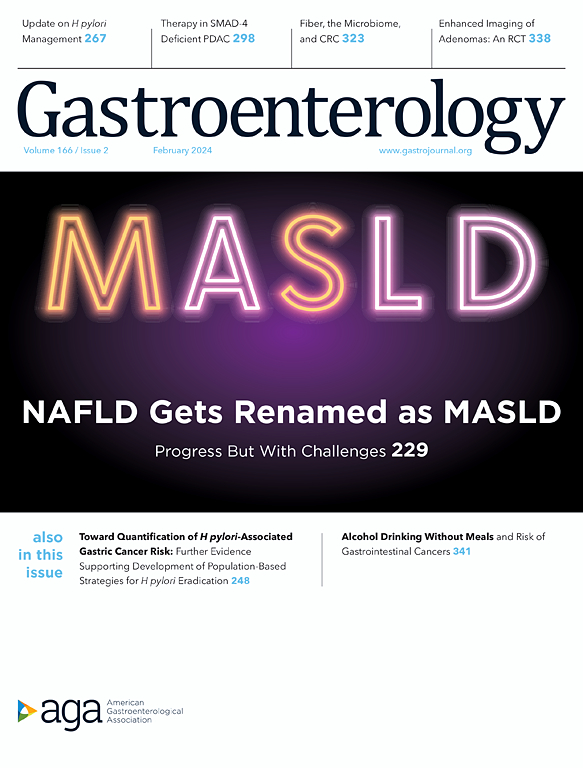Barrett’s Oesophagus Surveillance versus endoscopy at need Study (BOSS): a randomized controlled trial
IF 25.7
1区 医学
Q1 GASTROENTEROLOGY & HEPATOLOGY
引用次数: 0
Abstract
Background and aims
Barrett’s esophagus (BE) is a precursor lesion for esophageal adenocarcinoma (EA). Surveillance endoscopy aims to detect early malignant progression: though widely practised it has not previously been tested in a randomized trial.Methods
BOSS was a randomized controlled trial at 109 centres in the UK. Patients with BE were randomized to two-yearly surveillance endoscopy or ‘at need’ endoscopy, offered only for symptoms. Follow up was a minimum of 10 years. The primary outcome was overall survival in the intention-to-treat population. Secondary outcomes included cancer-specific survival; time to diagnosis of EA; stage of EA at diagnosis; frequency of endoscopy and serious adverse events related to interventions.Results
3453 patients were recruited. 1733 patients were randomized to surveillance and 1719 to ‘at need’ endoscopy. Median follow up time was 12·8 years for the primary outcome. There was no evidence of a difference in overall survival between surveillance (333 deaths in 1733 patients) versus ‘at need’ arms (356 deaths in 1719 patients), hazard ratio 0·95 (95% CI 0·82-1·10), stratified log-rank p=0·503). There was no evidence of a difference for surveillance versus ‘at need’ endoscopy in cancer-specific survival (108 vs. 106 deaths from any cancer, HR 1·01 (95% CI 0·77-1·33), p=0·926), time to diagnosis of EA (40 vs. 31 patients had a diagnosis of EA, HR 1·32 (95% CI 0·82-2·11), p=0·254), or cancer stage at diagnosis. 8 (0·46%) surveillance patients and 7 (0·41%) ‘at need’ patients reported serious adverse events.Conclusion
Surveillance did not improve overall survival or cancer-specific survival. ‘At need’ endoscopy may be a safe alternative for low-risk patients.求助全文
约1分钟内获得全文
求助全文
来源期刊

Gastroenterology
医学-胃肠肝病学
CiteScore
45.60
自引率
2.40%
发文量
4366
审稿时长
26 days
期刊介绍:
Gastroenterology is the most prominent journal in the field of gastrointestinal disease. It is the flagship journal of the American Gastroenterological Association and delivers authoritative coverage of clinical, translational, and basic studies of all aspects of the digestive system, including the liver and pancreas, as well as nutrition.
Some regular features of Gastroenterology include original research studies by leading authorities, comprehensive reviews and perspectives on important topics in adult and pediatric gastroenterology and hepatology. The journal also includes features such as editorials, correspondence, and commentaries, as well as special sections like "Mentoring, Education and Training Corner," "Diversity, Equity and Inclusion in GI," "Gastro Digest," "Gastro Curbside Consult," and "Gastro Grand Rounds."
Gastroenterology also provides digital media materials such as videos and "GI Rapid Reel" animations. It is abstracted and indexed in various databases including Scopus, Biological Abstracts, Current Contents, Embase, Nutrition Abstracts, Chemical Abstracts, Current Awareness in Biological Sciences, PubMed/Medline, and the Science Citation Index.
 求助内容:
求助内容: 应助结果提醒方式:
应助结果提醒方式:


